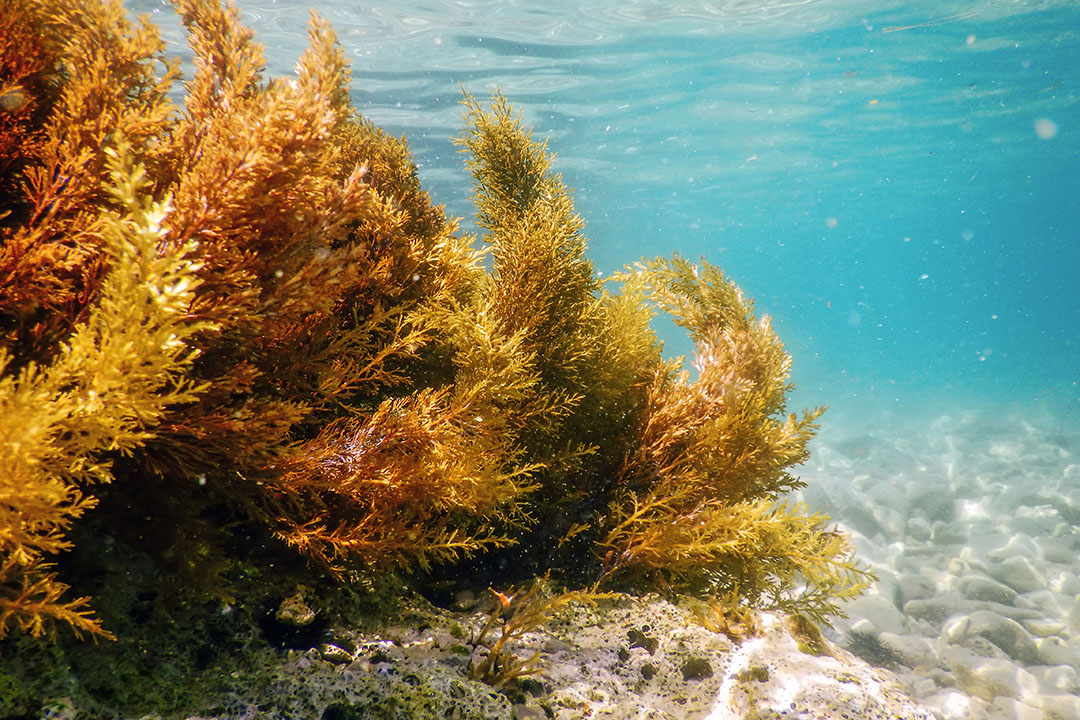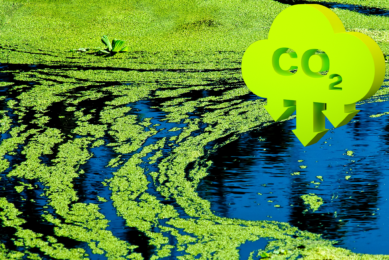Algae: A tool for antibiotic reduction

Specific macroalgal polysaccharides have been selected to support the immune function and the integrity of the intestinal epithelium. By doing so, antibiotic use can be reduced.
In modern production systems, the gastrointestinal tract is continuously challenged and the subtle balance gut health relies on, can be disrupted. The components that define gut barrier and immune function can be weakened and this situation leads to higher occurrence of digestive troubles associated with dysbiosis. This disbalance will trigger local and systemic inflammation, affecting the health status and the growth performance of the animals. The challenge in the industry is to find solutions capable of supporting the intestinal mucosal barrier function and the gut-associated lymphoid tissue (GALT) in order to maintain a proper health status and thus ensure good performance without the need of antibiotics. Recent scientific work has pointed out the potential of in-feed marine macroalgal polysaccharides as reliable agents for the modulation of the immune function and the reinforcement of the intestinal barrier function which are strategies leading to a higher resilience degree of animals against external aggressors.
Macroalgal extracts specificity
Parietal polysaccharides of seaweeds present structural complexity and a unique composition that confers high reactivity and explains their biological properties when used in animals. The complexity and biological reactivity of seaweed polysaccharides derive from the nature of the sugar units, which are diverse and sometimes rare, like uronic acids, xylose and rhamnose; the variety of glycosidic bonds leading to their branched structure and the presence of sulfate groups. Furthermore, their polyanionic structure and solubility increases their reactivity and facilitates their recognition by host cells. Sulphated polysaccharides are characteristic of macroalgae (they are not found in terrestrial plants, nor fresh water microalgae or yeast cell walls). Olmix Group, France, has been studying marine biotechnologies for more than 20 years , leading to the development of an in-feed product, Algimun®, which is based on the combination of 2 biologically active macroalgal extracts: MSP® BARRIER, a red algal extract (hereafter called red algae extract, which enhances the gut barrier function; and MSP® IMMUNITY a green algal extract (hereafter called green algal extract), that reinforces innate and adaptive immune responses (Figure 1).
Figure 1 – Seaweed polysaccharides structure responsible of their high biological activities.
Immunomodulating properties
A research project in collaboration with INRA (France) led to the demonstration of the effect of the green algae extract on immune mediators’ transcription in an in vitro model (IPEC-1 cells), including the identification of the metabolic pathways involved in this activation. Berri et al. (2016) first highlighted that the extract could positively influence the gene transcription of a broad array of immune mediators involved in defence mechanisms within the innate and the adaptive immune response, among others, the recruitment and activation of antigen-presenting cells, such as dendritic cells and macrophages, the differentiation and proliferation of lymphocytes B and lymphocytes T, while inducing immune tolerance thanks to its anti-inflammatory properties. In vivo scientific studies further confirmed the immunomodulating properties of the green algae extract, namely by improving the defence activities of monocytes and heterophils in broiler chickens (Guriec et al., 2018) and by favouring the transfer of lactogenic immunity (through colostrum and milk) from the sow to the piglet (Bussy et al., 2019). Olmix Group conducted a set of experiments in collaboration with Intestinal Biotech Development (France, 2017) in order to assess the effect of the red algae extract on the intestinal barrier function using in vitro models, mucus-secreting HT-29 MTX cells for evaluation of the effects on mucins and enterocyte-like Caco-2 cells for the evaluation of the effects on tight junction proteins. Results showed that the extract upregulates the gene expression of transmembrane and scaffolding proteins which are essential for optimal functioning of these multiprotein junctional complexes. Besides, the red algae extract upregulates the expression of mucin targeted genes that have crucial tasks in the regulation of epithelial cell differentiation (membrane-bound), the establishment of the mucus layer (gel-forming) and the prevention of pathogen colonisation. Thus, red algae extract plays an important role in the maintenance of gut mucosa integrity by rendering the tight junctions stronger and a more functional mucus layer. These results were corroborated in a scientific study carried out at INSERM (France, 2018), the supplementation of the red algae product to mice submitted to stress (model known to induce intestinal inflammation) significantly reduced the paracellular passage of FITC-conjugated sulphonic acid (gut permeability marker) to the blood. Therefore, the red algae extract supplementation to stressed animals significantly reinforced intestinal barrier function which is the frontline of the innate defence against pathogens and toxins.
Figure 2 – Veterinary treatments needed during transition period (%) – (Pigs from 21 to 64d).
Effect of the combined algae extracts
The benefits of Algimun®, combination of the red and the green algae extracts improved growth performance (+ 2.3% ADG, -1.8 FCR, +3% PEF) and reduced mortality rate (-4.5%) when compared to the control animals with a net benefit for the integrator of + € 0.03 per broiler (trial with 400,000 broilers). In sows, the product showed an increase in colostrum quality (+25% of immunoglobulin G levels) when compared to control animals. This favourably affected the technical results of their litters and resulted in fewer veterinary treatments needed (-25%, P<0.01) and higher body weight at weaning (+360g, p=”0.056);” generating an increase of 10% in the net benefit (+ € 7.75 per sow). trials in piglets showed a lower inflammatory status (-16% haptoglobin level), a significantly lower percentage of animals needing a veterinary treatment (-57%, p><0.01,>Figure 2) and improved growth performance (+300g at the end of the trial) when compared to the control group. The trials confirm that the product with the red and green algae extracts can be used as a natural alternative in-feed strategy to improve health and growth performance, hence reducing antibiotic use on farms.
References available on request.













